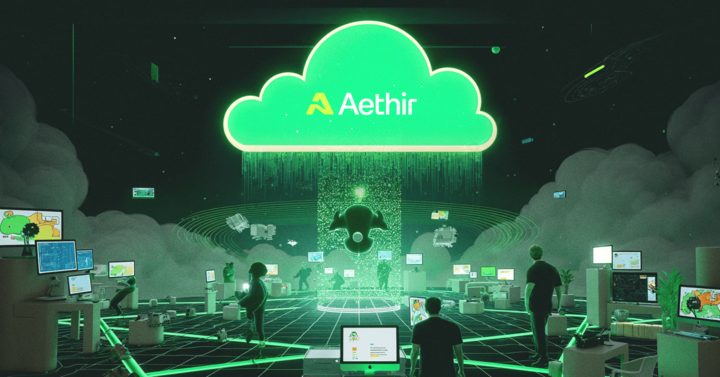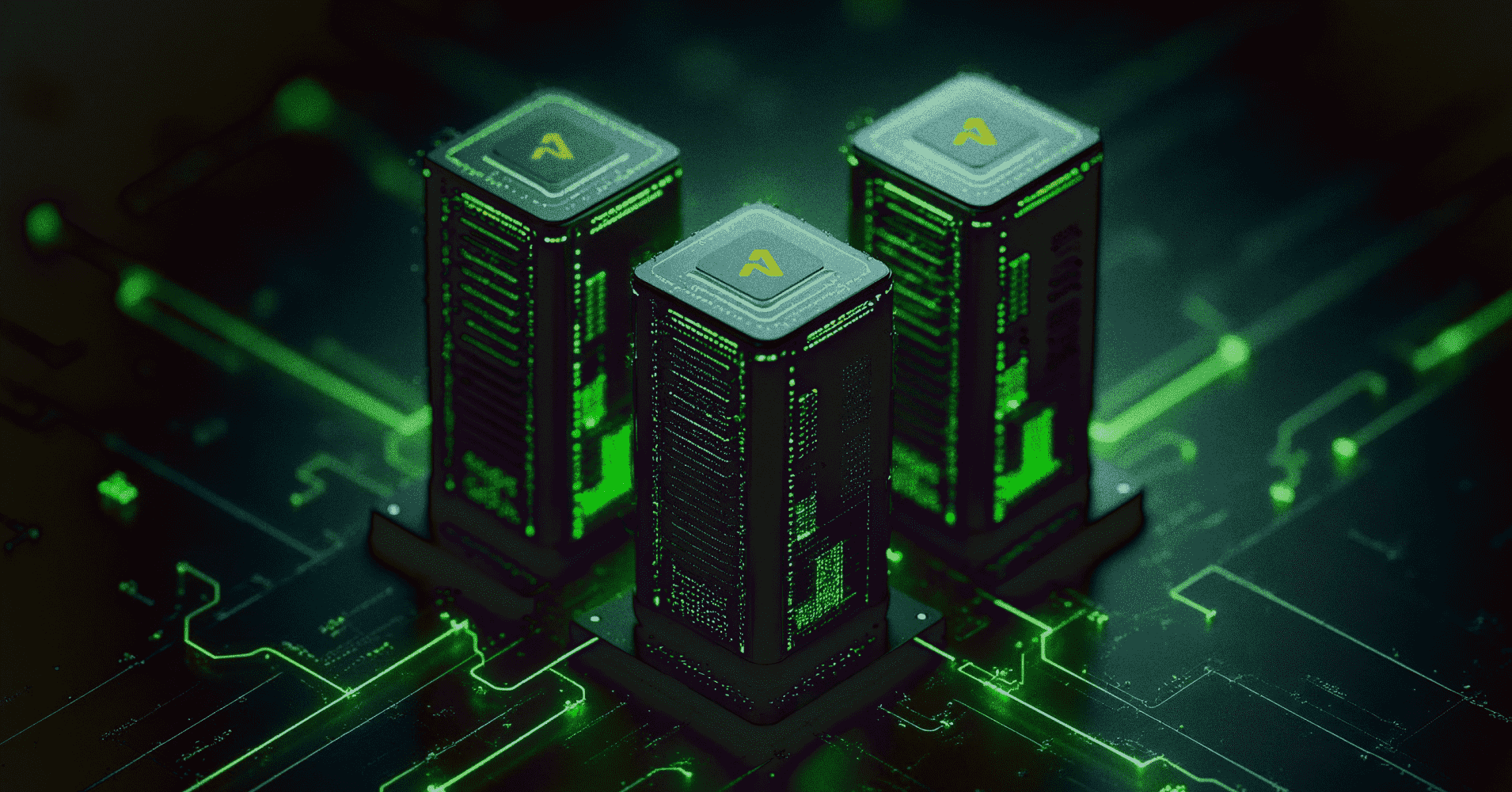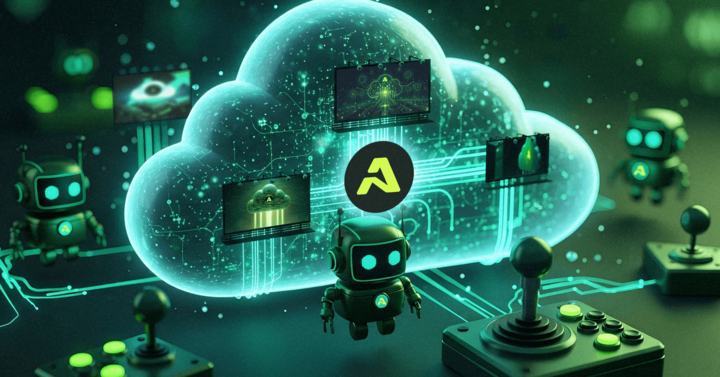In the worlds of gaming and cinematic production, the way assets are created is undergoing a radical shift. AAA gaming studios and indie Web3 developers are introducing AI workflows into their pipelines. AI maximizes productivity and improves the quality of visual elements. AI game development tools and generative AI are a must-have for modern studios. The days when every character, environment, or animation had to be manually designed and modeled from scratch are long gone. Thanks to AI integration, studios can leverage next-generation tools. These include diffusion models, procedural generation engines, and AI-assisted rigging systems. However, studios need decentralized GPU cloud computing to scale AI art generation.
AI game development unlocks a new level of creativity. It's supported by AI algorithms that can produce visuals at incredible speed. These tools unlock new creative potential and accelerate production, and they are compute-intensive. To integrate AI into game development, studios require scalable and cost-effective GPU computing.
Centralized cloud providers can no longer keep pace. Their services are too expensive, especially for smaller gaming studios. Also, they have limited flexibility, and are prone to compute supply bottlenecks.
Aethir’s decentralized GPU cloud is immune to such limitations. We provide GPU-as-a-service with real-time rendering capabilities across 94 countries. Aethir has over 430,000 high-performance GPUs for AI-powered art production use cases.
Generative Workflows Are Reshaping Asset Creation
Generative AI is at the core of the AI revolution, transforming how art studios and gaming companies produce visuals. It upscales game rendering to previously unseen heights. Studios are combining generative AI with production-grade pipelines. This results in enhanced visuals across different platforms and use cases. Leading art studios, such as Virtuos, Lakshya, and Room 8 Studio, are leading this movement.
Key artistic AI game development processes include:
- Diffusion Models for 2D/3D Asset Generation: Studios utilize models such as Stable Diffusion and DreamGaussian to create detailed character concepts and props. They can even generate textured 3D meshes with minimal manual input, all thanks to AI. Art studios and gaming companies can increase production speed. They can generate hundreds of high-quality variants without spending days and weeks.
- Automated Rigging and Skinning: With AI-powered systems, studios can rig humanoid and non-humanoid models. This drastically reduces the time usually spent on manual adjustments. It's especially useful for creating in-game characters and NPCs in open-world gaming environments. Studios can easily create animation-ready assets this way.
- Procedural Environment Generation: Art studios used to create gaming environments manually from scratch. Thanks to AI art generation, studios can use procedural content tools to generate gaming environments. Creators can leverage AI models to create cities, islands, dungeons, battlefields, and more.
These are all GPU-intensive AI game development tools that need powerful GPUs. Art production studios and gaming companies need reliable cloud computing to integrate AI.
The Cost & Latency Bottlenecks of Centralised Clouds
The everyday use of GPU-intensive AI-powered solutions requires reliable access to cloud computing. AI art generation, procedural simulation, and real-time iteration rely on large-scale compute power. Art production studios don’t own high-performance GPUs directly. They rent them from cloud computing providers. However, traditional clouds, such as AWS or Google Cloud, are prone to supply chain bottlenecks. They are known for high latency, and increased costs, presenting several barriers to the scalability of art production.
Let’s look at the most prominent scalability challenges of centralized clouds.
Long Queue Times
When internal GPU clusters or traditional cloud providers are overloaded, artists and technical teams face critical delays. Centralized clouds can’t simply allocate additional GPU compute on the go. They can’t pool processing power from multiple sources. Unlike Aethir, which channels additional compute to clients from idle GPUs in real-time.
High and Unpredictable Costs
Traditional clouds charge high fees for GPU usage, particularly for high-performance GPUs such as the A100 and H100. Large-scale art studios and gaming companies have the funds to afford such services. However, smaller studios and indie developer teams can’t. Aethir’s decentralized GPU cloud offers a much more flexible payment structure. Our GPU-as-a-service is tailored for all types of clients. We service everyone, from AI game development startups to AI art generation studios.
Limited Customization
Traditional cloud solutions often force studios into rigid deployment structures. Such models don't suit creative pipelines requiring flexible runtime environments. Art production studios require customizable GPU support that can process data locally. They need ultra-low latency computing at affordable prices. Aethir’s GPU network is flexible and globally distributed throughout the entire network.
Vendor Lock-In Risks
For studios working with IP-sensitive projects, centralized clouds introduce dependencies and control risks. Contracts with traditional cloud providers often force clients into vendor lock-ins. They require them to pay expensive service fees without the flexibility to shift to other vendors. With Aethir, there’s no vendor lock-in and clients only pay for the compute they are actually using.
These traditional cloud bottlenecks all have a common cause: centralization. Aethir’s GPU-as-a-service network uses a different, decentralized GPU cloud approach.
Aethir’s Decentralized GPU Cloud: How It Works
Aethir’s decentralized GPU cloud relies on GPU Containers provided by independent Cloud Hosts. An entirely community‑owned GPU network services our clients. Anyone can become a Cloud Host in Aethir’s DePIN stack. Our GPU network is community-owned.
Cloud Hosts contribute their idle GPU compute to Aethir’s GPU-as-a-service network. Indexers then pair GPU Containers with clients according to their specific needs. Our clients are serviced by the closest available GPU Containers ensuring ultra-low latency.
Let’s look at Aethir’s key benefits for visual asset production.
Massively Parallel Rendering
AI art generation studios can efficiently run multiple comput-demanding projects simultaneously. They don't need to worry about network congestion or compute shortage. Our Indexers monitor the network in real-time to channel additional compute to our clients if needed.
Real‑Time Generative Asset Creation
Rendering and iteration are done via local data processing. It brings compute closer to the user, thanks to our distributed edge network. Users are served by GPU Containers in their vicinity, not by those located in the network’s center. Edge GPU rendering is crucial for generating procedural environments and powering diffusion models. It supports key game art generation in AI‑powered asset pipelines.
Lower Latency for Interactive Creative Sessions
Aethir minimizes latency, securing ideal conditions for interactive creative sessions. Artists can preview assets, iterate on lighting, or adjust animations in near real-time.
Cost Optimization without Sacrificing Compute Performance
Aethir doesn’t have the high-margin pricing of centralized hyperscalers. We offer studios predictable and scalable pricing that aligns with their production needs. Our infrastructure is community-owned. This enables us to avoid incurring high data center maintenance costs. This, in turn, allows us to offer unbeatable prices to our clients.
Security and Creative Control
Vendor lock-ins are a thing of the past with Aethir. Clients have complete creative control over how they deploy, manage, and secure compute. This is ideal for teams working on proprietary pipelines and sensitive IP.
Aethir’s services provide scalable compute without the limitations of centralized clouds.
Redefining the Creative Stack for the Next Decade
Gaming studios today need to generate hundreds of variants of NPCs and props. Without AI functionalities, this could take years. This is one of the reasons gamers have been waiting so long for titles like The Witcher 3, Cyberpunk 2077, or GTA V.
Today, gaming companies have AI art generation at their disposal. They can accelerate production without compromising quality. AI tools enable art production studios to refine their techniques through AI inference. This unlocks new solutions for creating breathtaking visuals and immersive gameplay experiences.
With Aethir’s decentralized cloud, studios can utilize hundreds of GPU instances in parallel. They can generate hundreds of character variants simultaneously. Artists can preview and tweak outputs in real-time, thanks to localized data processing.
Our GPU-as-a-service ensures fast, uninterrupted access to flexible compute resources. We charge based on usage. In today’s era of distributed and remote teams, the ability to render and use generative AI is a key advantage.
Aethir’s decentralized GPU cloud offers an ideal solution for art production studios. We offer scalable, flexible, and cost-effective compute built for next-generation creative workflows. Aethir enables studios to make substantial cloud GPU cost savings. Our edge GPU rendering infrastructure is a viable a vendor lock‑in alternative.
Learn more about Aethir’s decentralized GPU cloud for art production studios here.
For more details and educational content about Aethir’s GPU cloud, check our official blog.
FAQ
What makes a decentralized GPU cloud different from AWS or GCP?
A decentralized GPU cloud utilizes distributed compute resources that are community-owned. These GPUs are located in multiple locations, rather than a few hyperscale data centers. Aethir’s decentralized cloud can provide cost-efficient GPU services to clients worldwide. Unlike centralized clouds, which are typically limited to those near regional capitals.
How much GPU power do AI diffusion models actually need?
AI diffusion models are highly GPU-intensive and require access to premium GPUs to function smoothly at scale. AAA gaming studios require high-performance GPUs to support diffusion models for game art.
Can indie studios afford enterprise‑grade GPUs?
Indie game developers can’t afford expensive enterprise-grade GPUs from traditional cloud providers. Aethir’s decentralized GPU-as-a-service can support indie gaming studios with affordable, enterprise-grade GPUs. Our compute comes at a fraction of the prices offered by centralized clouds.
How does edge rendering cut latency for remote artists?
Edge GPU rendering reduces latency for AI art generation, AI rigging, and skinning. It leverages local data processing and rendering. The physically closest available GPU Containers service artists to minimize the latency.





